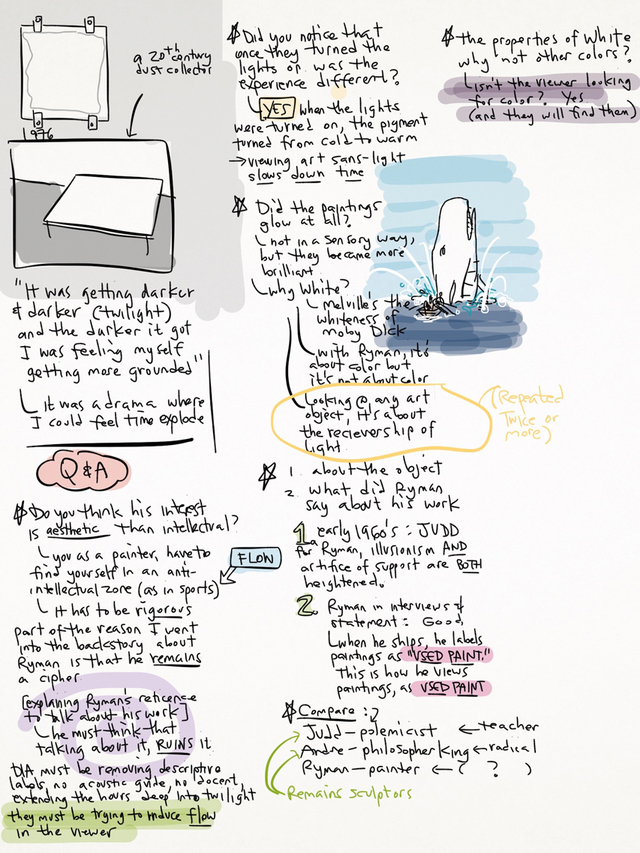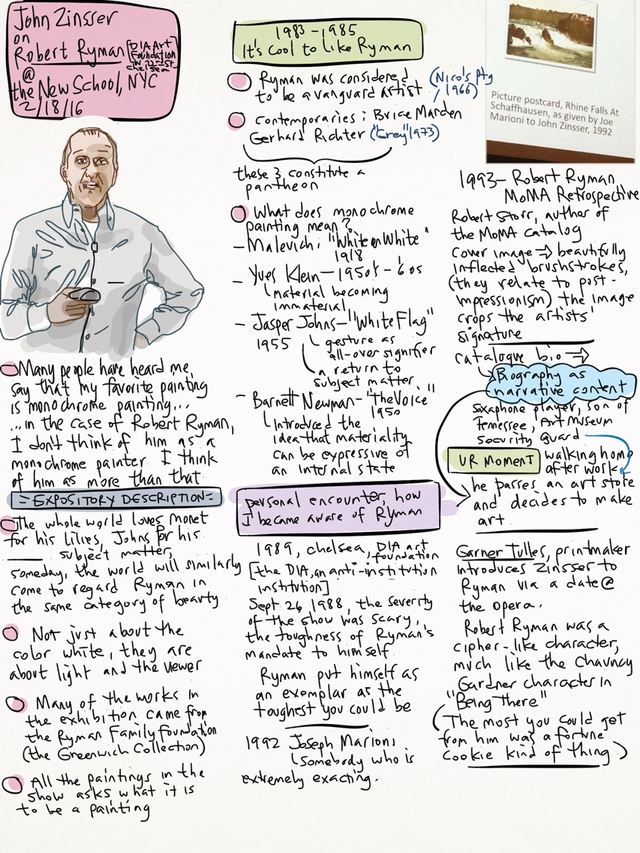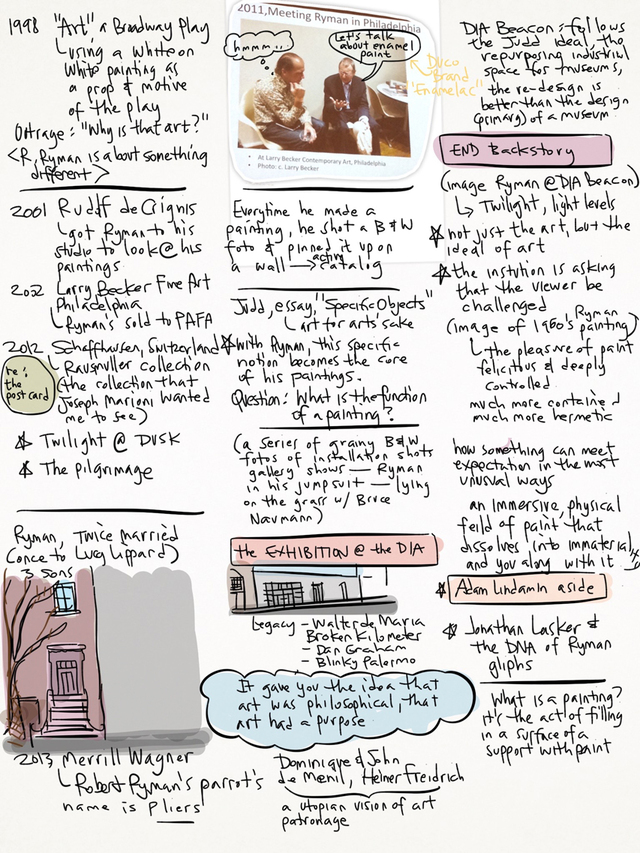February 18, 2016
John Zinsser on Robert Ryman at the New School
Today, John Zinsser gave a talk to his class at the New School, about the paintings of Robert Ryman and his exhibition at the DIA Art Foundation in Chelsea NYC.
I took notes:

This is what I wrote about Ryman a month ago:
When I think of Robert Ryman's work, I think of exploded axonometrics. A term common in architectural contexts, the exploded axon is a method of making clear the component parts of a complicated object. Ryman famously made all of the component parts of a painting eligible for aesthetic disposition, from paint-qua-paint on the surface to all of the elements of the support behind, and even to the method of mounting all of this to a wall. Like Stella, Ryman has a survey exhibition up currently in NYC this season, at the DIA Art Foundation, Chelsea. What I see in this show is how Ryman has settled over the years more on paint-qua-paint and less on painting as an exploded axonometric. I am compelled to note parenthetically that for me his axon paintings tend to recall Donald Judd's work and so I wonder about the nature of any cross influences. For the segment of his oeuvre that treats all components of a painting, through the parts of the support, down to the brackets on the wall... there is little of the ooze and flow to these elements that are natural to paint that he has taken the liberty to exploit. All components keep their place in all arrangements: brackets stay on the wall and don't appear to rival or displace the daubs of paint on the surface of his constructions. Supports still support but only support. Every component serves paint-qua-paint and there are no trading places. So it was no surprise to see that he had arrived at what is obviously an overriding concern. The accompanying catalog notes that he considered that the color white encompassed all color, and so his facture stays focused on the one color which for him was all color.In other (and perhaps merely only more) words, I saw a painter preoccupied with the facture (handling) of paint. In order to do this, Ryman initially made clear the constituent parts of a painting from paint to the cloth surface to the wood or metal frame that suspends it to the method of attachment to the wall. He did nothing with these explicated elements, he did not treat or exploit them in a painterly manner, in a plastic manner. He did not do what Beethoven did in his later symphonies, for example, in the liberties he took with the sonata form: stretching, inverting, juggling the elements at will. Curiously, Ryman's practice in later years relaxed to what is his ultimate concern: a loaded brush expending itself on a surface and reloading again.
John anchored Ryman on Donald Judd, but what I got from Zinsser's lecture was a sense of the light and space artists. With Zinsser's emphasis on the dissipating twilight at dusk, images of Turrell replayed in my head. Zinsser: "It was getting darker and darker [twilight] and the darker it got, I was feeling myself getting more grounded".
This dissipation extended to the persona of Ryman as an enigmatic figure in art history "...he was a cipher... a cipher character, much like the Chauncey Gardner character in 'Being There' ", [explaining Ryman's reticence to talk about his work] "...he must think that talking about it, ruins it..." And as such, he emptied his persona up so that it's easy for the public to fill it -him, Ryman- up with their projections. Now I'm sure Zinsser was merely joking when he referred to the DIA Foundation as a cult...
[At this point, only an ellipsis can end this train of thought]
Posted by Dennis at February 18, 2016 10:27 PM

Leave a comment